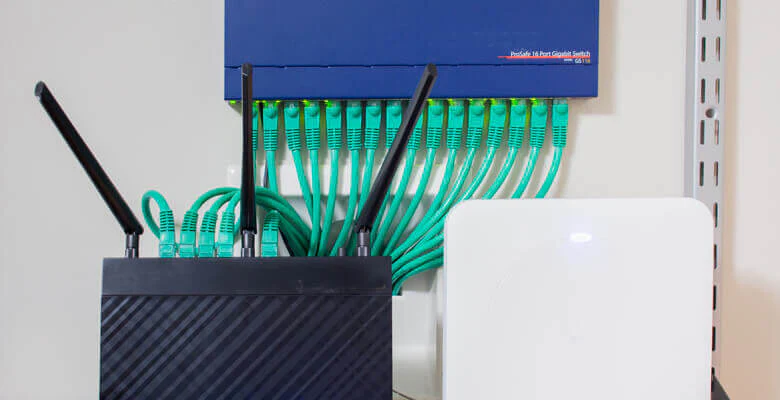Switches are crucial in networks, used by thousands to send data to various devices. Choosing the right switch is important due to their essential role in networking. There are different types of switches, such as unmanaged switches and managed switches. Both types share the same core function of connecting multiple devices to a Local Area Network (LAN), but they have distinct differences. In this article, we will discuss these differences.
What are the Basics of Switches?
Switches are ideal for adding additional Ethernet ports to your LAN setup, whether it’s at home or in the office. They allow you to connect devices like computers, gaming consoles, printers, or any device with an Ethernet port, expanding your network’s wired connections.
What is an Unmanaged Switch?
Unmanaged switches are the simplest type of switch. They are plug-and-play devices that automatically detect connections when you plug in your Ethernet cables. These switches do not require any configuration, management, or maintenance, making them the easiest to use and usually the least expensive option.
What is a Managed Switch?
Managed switches, on the other hand, can have a steeper learning curve compared to unmanaged switches. Each device may have different setups and could offer more features than others. When choosing a managed switch, decide which features are most important to you, as this will guide you through the various models available.
What is the Difference Between Managed and Unmanaged Switches?
Here’s a quick summary of the key differences between an unmanaged switch and a managed switch:
Unmanaged Switches:
- Connect multiple devices to a Local Area Network (LAN)
- Plug and play functionality
- Minimal control over functions
- Standard configuration
- Sometimes have a graphical user interface
- Ideal for non-technical users
- Suitable for small or large networks, used in homes or offices
- Often less expensive than managed switches
Managed Switches:
- Connect multiple devices across networks (LAN, WAN, VLAN)
- Greater control over settings and functions
- Requires technical configuration
- Can include a graphical user interface
- Requires more technical knowledge to operate
- Suitable for home, small business, and enterprise levels
- Often more expensive than unmanaged switches
Understanding these differences can help you choose the right type of switch for your networking needs, whether you’re setting up a simple home network or managing a complex business network.
This post was written by a professional at Link-Us Online. At Link-Us Online, we understand the power of networking and its potential to improve the efficiency of your business. Our team empowers users to discover and acquire high-quality networking hardware from a diverse range of suppliers. We offer a range of industry-leading solutions from top brands such as Cisco, Meraki, HPE, Juniper, APC, Fortinet, and Ubiquiti. Whether you’re a small business owner seeking reliable equipment for your expanding network or someone in the purchasing department working for universities, real estate management companies, or local governments hunting for specific gear, Link-Us Online is your dedicated ally. Contact us if you are looking for Aruba networks products.








Comments